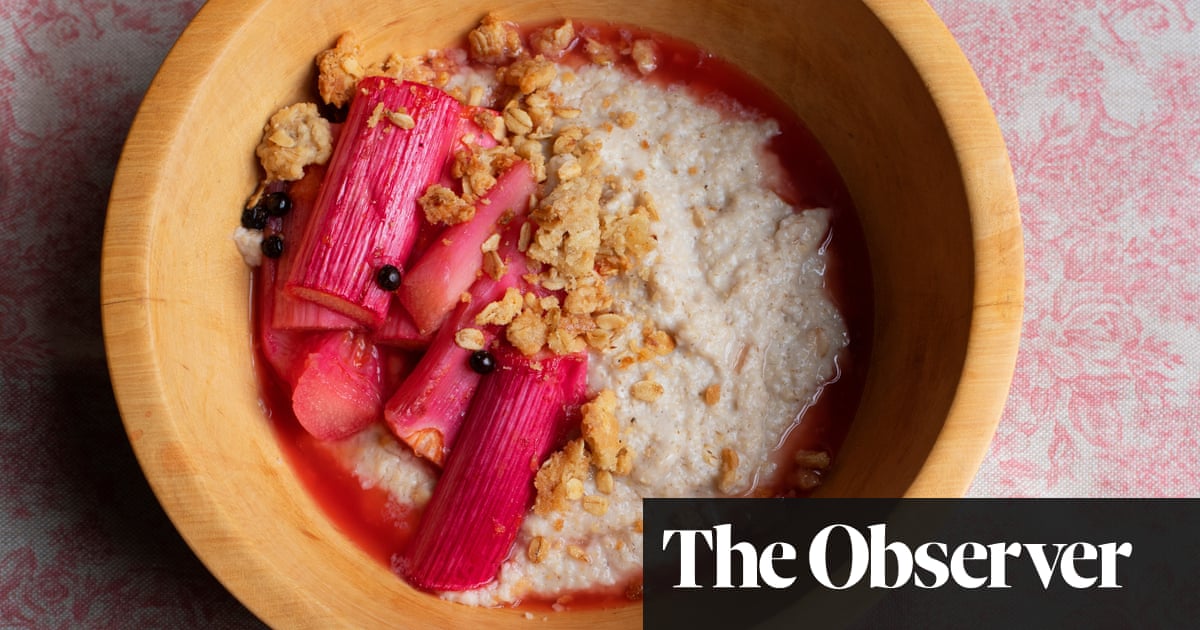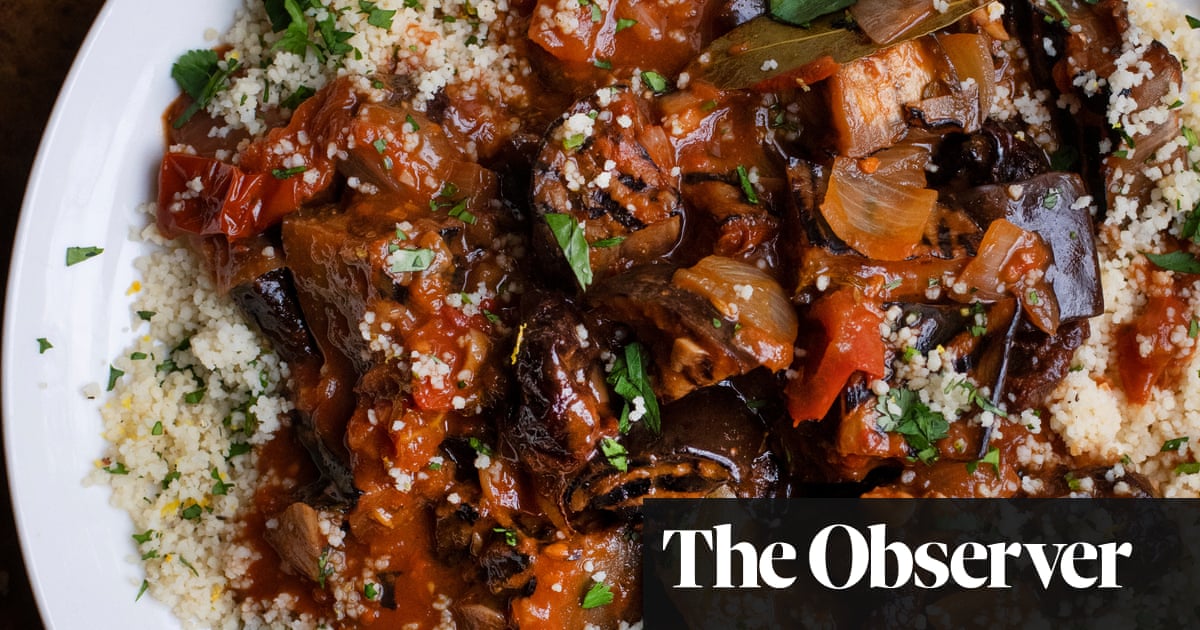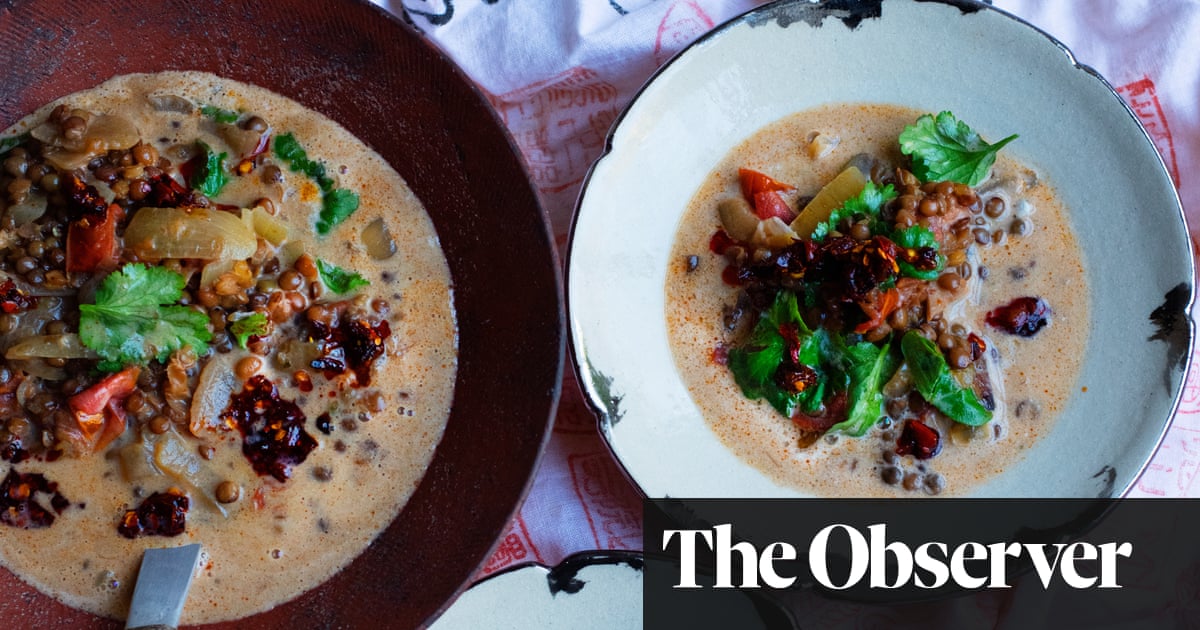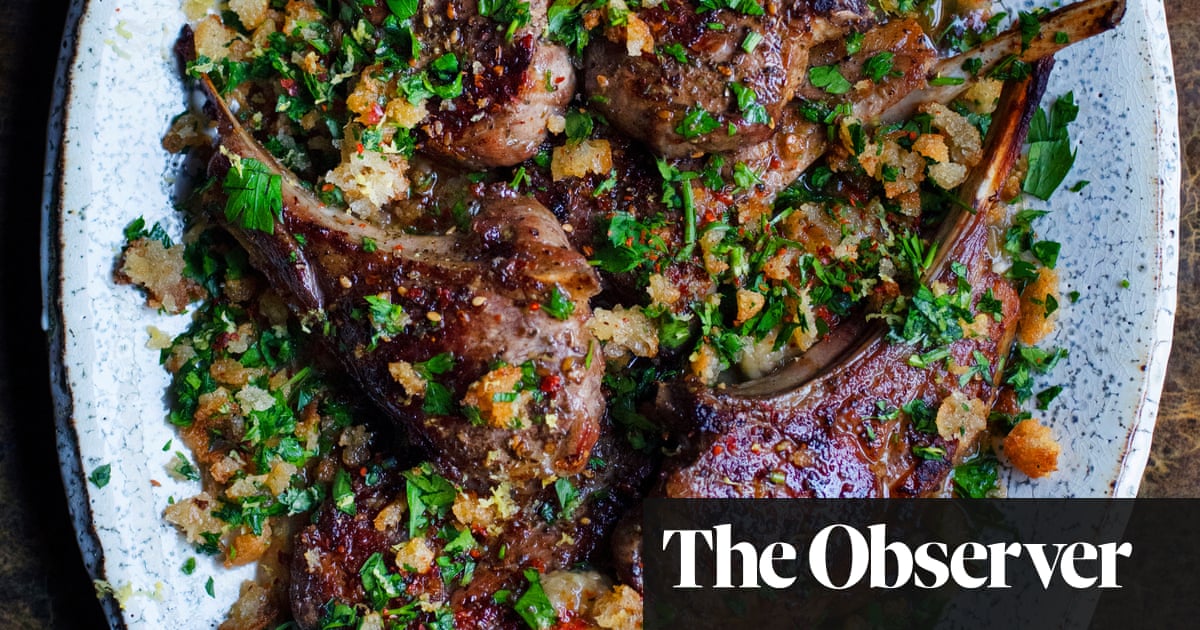
he third shelf in the kitchen cupboard is home to a collection of bottles and jars, seasonings and syrups, preserves and condiments. Some – the Marmite and the peanut butter – get what is pretty much a daily outing. Others see the light of day less often, but are no less essential in the right recipe. Among the chilli vinegars and mushroom ketchups, the smoke-scented salts and soy sauces, there is a bottle of dark, red-brown pomegranate molasses. This is the syrup I turn to when I want to introduce a subtle, mellow sourness, which nowadays is quite often.
Today, this sticky brown syrup – the best being made with as few ingredients as possible – is for deepening the interest of a crunchy peanut crust I am spreading on to roasted pumpkin. I have previously used honey to balance the heat of the chillies and pungency of the garlic, but this is better, having not only sweetness but deep, fruity, almost wine-like notes, too. Pomegranate molasses is just as well suited to savoury dishes as sweet. I use it by the teaspoon, tasting as I go, except when I’m making a marinade for pork ribs when I use it by the bottle, along with honey or the darker, slightly more monotone notes of date syrup.
While I have the bottle out, I shall include a little of this thick, tart syrup into the dressing for a salad of fresh pomegranates and blood oranges, which should be particularly welcome under a grey January sky. Briefly, it feels as if the sun was shining again. And heaven knows, we all need some of that.
Roast pumpkin with peanuts and chillies
You can use butternut squash for this, or a crown prince pumpkin or onion squash. The drier the pumpkin the longer it will take to roast to tenderness – the blue-skinned crown prince being a case in point. Slice those very hard squashes into thinner pieces before roasting. I sometimes find it useful to turn the heat up to 220C/gas mark 7 after spreading the peanut paste on the squash, to get a nicely crunchy crust. Serves 4
pumpkin or squash 800g
smoked garlic 5 large cloves
olive oil 5 tbsp
For the dressing:
peanuts 100g
cherry tomatoes 150g
parsley 20g
red chilli 1 large
pomegranate molasses 2 tbsp
olive oil 2 tbsp
Set the oven at 200C/gas mark 4. Halve the pumpkin, scoop out and discard the seeds and fibres, then cut each half into thick slices. You can leave the skin on – I find it holds the pieces together. Put them skin side down in a roasting tin, add the smoked garlic cloves, still in their skins, season with a little salt and pour over the olive oil.
Bake the pumpkin for 30-40 minutes until soft to the point of a knife.
Make the dressing: toast the peanuts in a dry pan over a moderate heat until the skins darken, shaking the pan regularly to encourage even browning. Tip the nuts into a clean tea towel and rub firmly until the skin flakes off. Return the skinned peanuts to the pan and let them cook over a moderate heat, shaking regularly until they are golden and fragrant. Remove from the heat and set aside.
Remove the garlic from the oven and squeeze the flesh into a food processor or blender, discarding the skins. Add the cherry tomatoes, toasted peanuts, parsley, chilli and the pomegranate molasses, season lightly with salt and process to a nutty paste.
Warm the oil in a frying pan, add the peanut paste and bring to the boil. Continue cooking for 5-10 minutes, stirring frequently, until the mixture has turned a dark terracotta colour and is deeply, nuttily fragrant. Remove from the heat.
Remove the pumpkin from the oven, spread some of the paste over each piece and return it to the oven for a further 20 minutes until the nuts are starting to crisp a little. Serve immediately.
Blood orange, pomegranate and orange blossom
As cheerful as this mixture of fruit and flower syrup was for dessert, it was even more so the following day when it came to the table as a winter breakfast. I served it with a bowl of thick yoghurt, but it would have been equally welcome spooned over granola. Serves 4
blood oranges 7
pomegranate 1, large
pomegranate molasses to taste
orange blossom water to taste
mint leaves 12
Using a very sharp knife, remove the peel and any white pith from 6 of the blood oranges. Slice each fruit into about 10 thin slices and put them in a bowl, trying to catch as much of the juice as you can. Halve the remaining orange and squeeze into a small bowl.
Halve the pomegranate, remove the seeds from one half, then add them to the oranges. Squeeze the juice from the other half – I use a lemon squeezer for this – then pour it into the orange juice. Introduce the pomegranate molasses, a teaspoon at a time, tasting as you go. I find 4 tsp about right, but stop when you have a sour-sweet juice that is to your liking. Stir in a little orange blossom water, drop by drop and tasting as you go. (A few drops is really all you need.)
Add the mint leaves, leaving them whole but lightly crushing them as you add them, then pour the dressing over the orange slices, cover with a plate and refrigerate for at least an hour.
Serve chilled in wine glasses or small glass bowls.












